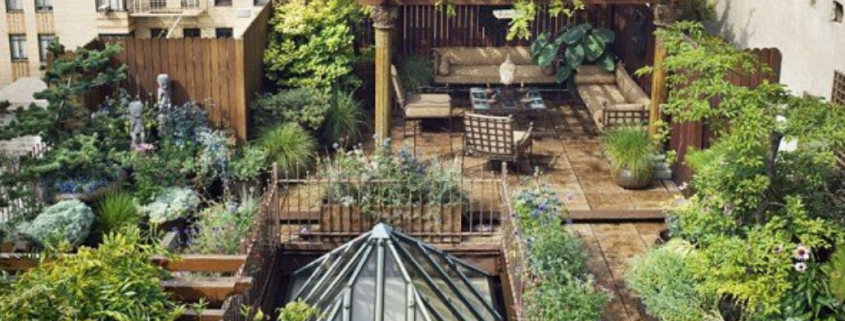Permaculture – not just another “buzz” word.
In today’s fast paced world, with new ideas and technologies constantly evolving, it seems as though we just move from one buzzword to the next, hoping to find a saving grace in the next best thing…. “going green”, “sustainability”, “passive house”, “net zero”, “net positive”, “resiliency”, “regenerative”… Especially in the green building world, it always seems as though there is something better, something a little newer, just around the corner. There will always be room for improvement and new ideas, but maybe much of that knowledge we seek, is right in front of us, and we’re just too busy looking for the next big thing..
People get excited about a new strategy or idea and I think that’s why certain words stick, like sustainability. Although the dictionary definition of sustainability doesn’t fully encompass all the changes that need to be made, and really only focuses on “sustaining” but not “repairing”, “thriving” or “regenerating”, it’s clear that the current movement has taken to use the word to encompass all of this and more. The Sustainability Movement is in motion encompassing all industries worldwide. It’s clear that this movement is beyond just a buzz word.
So, if you are like many, who enjoy a good “buzz” word, one of my favorites is Permaculture. Permaculture is a term used to describe a design methodology, which can help create a more “permanent” form of “culture”. The term was coined by an Australian by the name of Bill Mollison in the 1970’s. Bill and his colleague, David Holmgren worked together to create a design philosophy which pulled from native cultures, time tested strategies, current technology as well as many other brilliant ideas. One of these brilliant ideas is to gain a full understanding of the system you are working with, from inside and out. For instance, when creating inputs in a system’s design, you would want each input to have more than just one use, or yield. This idea is known in the permaculture world as “stacking functions”. So, any one input, would always provide two or more outputs. A simple example might be that you have a problem in the garden with pests, instead of spraying toxic chemicals, you decide to get some ducks instead, since ducks love to eat bugs. The ducks then eat the bugs and solve your pest problem. But, ducks also provide fertilizer through their waste, and they produce eggs for food. So as many of us in the permaculture world like to say… “The problem is the solution”. Instead of spraying a pesticide to kill the pests, you took time to observe the system, and gain a better understanding of what input might make the system function more smoothly. This idea of careful observation and other strategies were pulled together by David Holmgren. Holmgren came up with twelve key design principles for Permaculture, which we can use to address many issues currently found in society in order to design a more resilient, regenerative and permanent way of life.
The twelve principals are:
- Observe and Interact
- Catch and Store Energy
- Obtain a Yield
- Apply Self Regulation and Accept Feedback
- Use and Value Renewable Sources and Services
- Produce No Waste
- Design From Patterns to Details
- Integrate Rather Than Segregate
- Use Small and Slow Solutions
- Use and Value Diversity
- Use Edges and Value the Marginal
- Creatively Use and Respond to Change
This video is from David Holmgren’s permaculture principals site. More on these can be found here: https://permacultureprinciples.com/
So why do we need Permaculture?
Permaculture includes tools to address food, buildings, society, culture, the environment and more. Currently, the majority of our food is produced through the use of large scale agriculture processes which require huge amounts of chemical pesticides, toxic fertilizers and tons of oil in order to maintain production. The agriculture practice known as “mono-culture”, is where one crop is grown in vast quantities over hundreds or thousands of acres of farmland. The one crop “mono-culture” not only strips the soil of nutrients, but is highly susceptible to disease and pests because there aren’t any buffers or edges to stop the spread of a disease or insect. You essential have one microclimate for miles and miles with no diversity. This makes for a very weak system. In addition, the agriculture industry is one of the largest contributors to climate change, pollution and destruction of natural ecosystems. Modern agriculture is not resilient, and when inputs run out, the system falls apart. Have you ever thought of what might happen if oil wasn’t readily available? Your local grocery store wouldn’t be restocked because the delivery trucks rely on oil. The warehouses where they pack and ship the food rely on oil, and almost all of the farmers growing the food rely on oil. You have one input responsible for all the outputs. The current reliance on oil is far from resilient and quite disturbing when you think of the true fragility of the system. Permaculture allows us to address the current flaws with the food system and make it more resilient and far less reliant on oil.
What if there was a way to eliminate the need for constant inputs and create regenerative systems that (with minimal inputs) could sustain themselves and improve the soil? Prevent the need for pesticides? Or could be done on a level that reduced or eliminated the need for fossil fuels altogether? Permaculture can help us design for resiliency and it doesn’t only apply to growing food, and like I said before, it can also be applied to buildings, people, communities and regions. Through permaculture, we can bridge the gap between the needs of humans and the environment and design with intent to minimize negative impacts and maximize yields.
Within Permaculture, buildings, nature, landscapes and communities can be seen as one. Permaculture brings a sense of wholistic design, which incorporates elements of sustainability, biomimicry, biophilia, renewable energy and regenerative design to in order to mimic natural systems, maximize yields and create a truly resilient living environment. By looking beyond just the four walls, ceiling and floor, buildings can clean water, harness sunlight, grow food, provide habitat and adapt to changes in the environment. Instead of growing lawns, we can grow food. All your hard work in the yard on the weekend could end in more food on the table, lower grocery bills, less spent on gas for the lawn mower and happier people! Did you know studies have shown that those who garden are typically happier? (See article here) Imagine neighborhoods where grocery stores were much smaller and only reserved for specialty items? What if the vast majority of food came right from the land in your neighborhood. The idea of Permaculture isn’t just a utopian dream. It’s happening. People all over the world are studying Permaculture and transforming their homes and neighborhoods one plot at a time.
As the push to “buy local” grows, and people’s awareness of the need increases, it makes more sense to grow food close by, and move towards resilient food sources. Much of the food we eat here in the United States is grown in the mid-west and California, so if you live in on the east coast, the majority of your food is traveling thousands of miles to get to you. So, if food is local and plentiful, there is less reliance on shipping food from far away places and the food system becomes more resilient. This same concept can apply to buildings as well.
Buildings can now be designed to produce more energy than they demand, so they essential can become energy providers to buildings close by. What if all roofs captured and filtered rainwater and were covered in solar panels? It is possible to design human environments that work with nature and are truly resilient. It helps to determine how to “stack functions” during the design process. In addition to protection from the elements, roofs can capture water, grow plants, provide a space of relaxation, produce energy, etc. In order to get to true resiliency and a regenerative culture, we will need to change our idea of what is beautiful and what is important, as permaculture designs won’t typically look like the straight lined buildings and English style gardens we are used to. As we push to design more resilient buildings, we’ll find ourselves slowly changing our design priorities and I believe designs will maintain beauty, but become much more practical.
We are just now realizing the potential for permaculture and other strategies in the grand scheme of addressing climate change and the many other problems with our society’s current operation. As we push to improve our current system, there is much to be learned and a long road ahead. The key to making change, is education and knowledge sharing. When possible, keep your findings open source and let others learn from your mistakes so they can move over those hurdles and discover new obstacles. If information is made available to everyone, we will have the tools we need to create a future that works with natural systems, instead of against them. Our schools at all levels need to start offering classes on permaculture, gardening and to get children excited about growing their own food and understanding how to create resilient and regenerative systems. The systems exist to create a better future, we just need to spread the knowledge and use it.
Signature Sustainability provides Permaculture designs, discussions and presentations. If interested, contact us today: ian@signaturesustainability.com or 201-788-7963.



